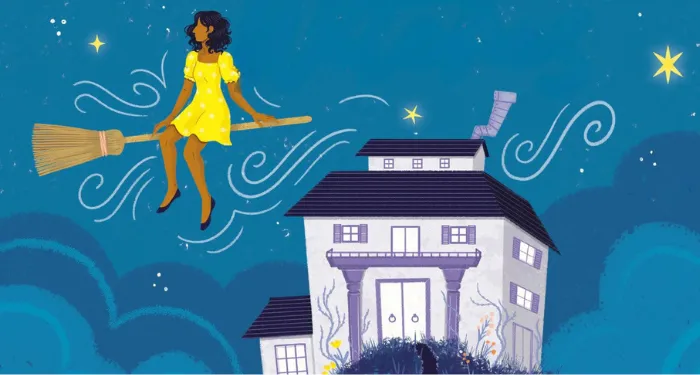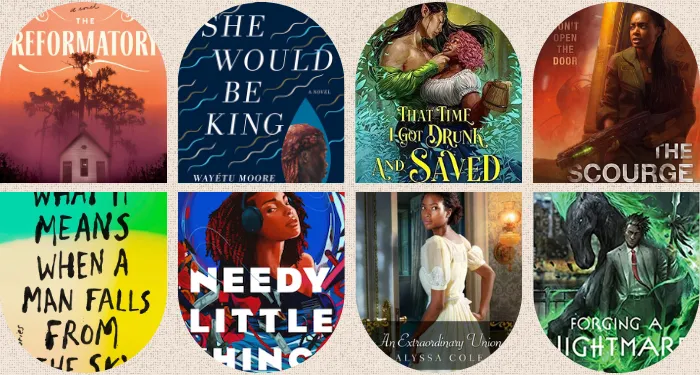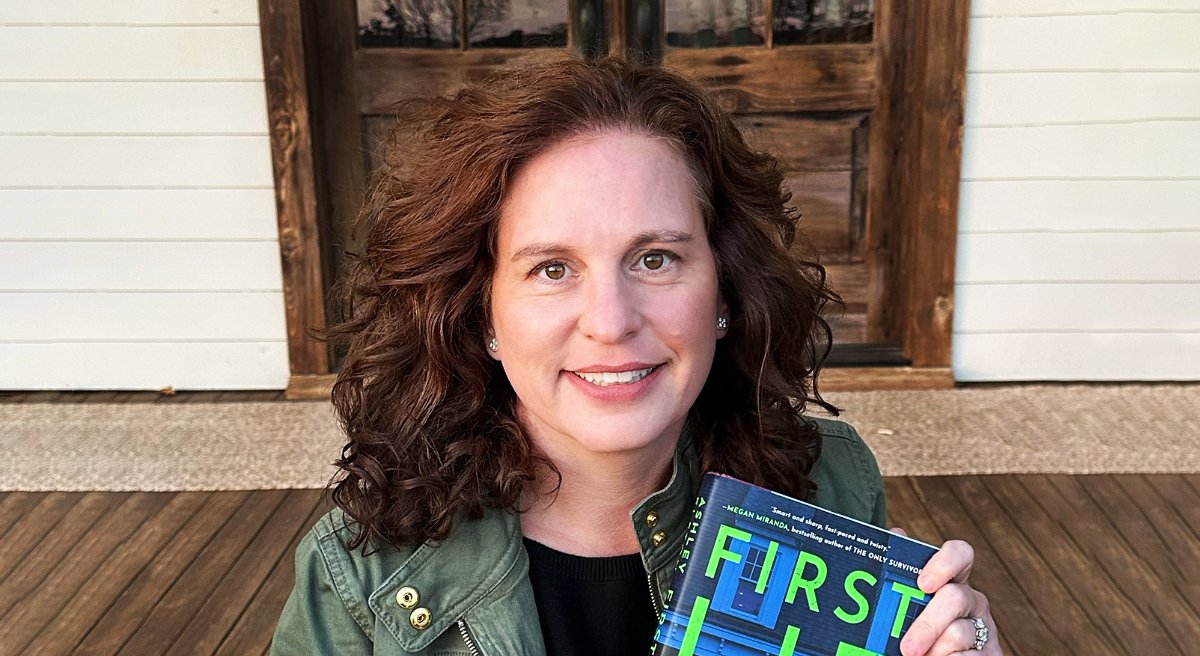He do the Police in different voices.
—Charles Dickens, Our Mutual Friend
Tottering on tiptoes, my eyes darting here and there to pick out that spot of pale orange in the forest of waving arms, I feel my body suddenly quake in a blast of noise. The young woman pressed against my left elbow, a girl really—fourteen? fifteen?—her eyes crunched shut, has given body and soul to an ungodly scream. Behind and in front of me, other screams shift into overdrive in response. “Like the Beatles” flits through my mind. My sudden panicked instinct is to get the hell out of there. But there is nowhere to go amid the violent jostle of humid bodies in their Make America Great Again T-shirts and Jesus Has Chosen Him sweatshirts and American flag capes. Lee Greenwood’s ubiquitous “God Bless the USA” has been swallowed up in the riotous screaming, and I know that somewhere behind the ferocious wall of sound, perhaps twenty feet away, he is stalking the stage. But I see nothing except the hundreds of arms raising high their phones, and as I gaze upward a tiny wavering screen gives a glimpse of that unmistakable head of ginger hair.
The Trump rally is the beating heart of Trumpism. It is a gathering, in communal love, of thousands joined in common hate. For those who feel alienated and angered by the relentless progressivism of contemporary culture, the Trump rally is a refuge where you can don your MAGA hat and Trump regalia and share a cathartic few hours with thousands who think as you do and scream along with them at stories that reaffirm every worry you’ve ever felt about immigrants “destroying our country” and the long-departed clarity of right and wrong. The moment you join that endless line leading to the rally—like this one in Las Vegas in mid-September—you transmogrify from a disgruntled outsider to a fellow believer surrounded by thousands of your brethren. You are one of those who see things the way they really are.
Apart from that powerful reaffirmation, the rallies, in their endless mockery and joshing, are fun. Much was made in 2016 of the fact that Trump was the first major American presidential nominee who wasn’t either a politician or a military man. Twenty years ago he became purely an entertainer, a reality-show facsimile of a billionaire businessman, and now it is his rallies that show him in all his Borscht Belt glory. He stalks the stage, clapping and nodding like a great silverback policing his tribe. He grimaces, pouts, apes a half-dozen voices, polls the audience, pesters them on what cherished anecdote they want to hear next. He razzes individual audience members. He jokes, ridicules, teases, and visibly swells with the crowd’s echoing laughter and applause. He is not really campaigning, hustling for votes, but rather sucking deep of his own peculiar oxygen, inhaling the worship of thousands of near-hysterical people. You can see him glistening with pleasure as he juggles his applause lines and pushes the crowd’s buttons.
On the teleprompter is his stump speech, carefully updated for that day’s news. But like a jazzman with his charts, two thirds of what comes out of his mouth is improvisation. The stump speech emerges in a kind of monotonal patter, artificial and studied; the riffs are real, as he turns directly to the audience with his “between you and me” tone. “I don’t often use a teleprompter because if you use a teleprompter, it gets very boring,” he told a crowd in Georgia in September. “If I read every single word, I could go right down and you’d be in and out of here in 35 minutes. You’d say, ‘That was pretty boring wasn’t it?’” In fact he uses the teleprompter for every rally, but the prepared speech is carefully braided, in that special singsong of his, through the mass of jokes, impressions, and stream-of-consciousness observations about how “they’re destroying our country” and how his opponent is “mentally impaired.” Improvisation shows Trumpism in its purest form:
People said I was angry during the debate, and I said, Why wouldn’t I be angry? Of course I’m angry. [Reading from the teleprompter:] We’ve got 21 million people that came into our country, invading our communities, invading our cities and our towns, and destroying our country. I’m angry about Venezuelan gangs taking over Aurora, Colorado. And I’m angry about illegal Haitian migrants taking over Springfield, Ohio. [Confidentially, to crowd:] You see that mess, don’t you? And the Colorado governor is petrified. He’s scared. He doesn’t know what to do. [In a whimpering voice:] “The Venezuelans are attacking my state!… The Venezuelans have big AK-47 Supremes!” [To crowd:] Where the hell do they get these guns? Our soldiers can’t get these guns. They are taking over our country from within. I mean, can you believe?
They do believe, though hardly a word is true. “I believe it because the president says it,” as a woman told me solemnly when I ask why she thinks the election was stolen. “And he would never lie.” Trump’s lurid dystopia is a fantasy of a mongrelized, crime-ridden country that barely grazes “the real world.” However much thought his followers have given to illegal immigration, Trump’s dark vision makes lucid their inchoate, seething anger and grievance. Their resentment is rationalized. Our shame and frustration are owed to these outsiders, the shady other in league with the corrupt elite—those who are stealing what is rightfully ours. Trump is in the business of creating terrifying and self-affirming fantasies that track real grievances and frustrations, and his rallies are his workshop, where he plays on the crowd’s emotions like Faust with his magic lantern. Speaking to Ramin Setoodeh, coeditor-in-chief of Variety and the author of Apprentice in Wonderland, Trump compares himself to Marlon Brando and Clint Eastwood, and notes, says Setoodeh, that “what makes a celebrity…is charisma, which can’t be taught.” Charisma is commonly defined as “a divinely conferred power or talent”—which makes one ask: What exactly is Trump’s? Surely it has to do with telling stories:
[Teleprompter voice:] I am angry about young American girls being raped and murdered by savage criminal aliens that come into our country very easily but very illegally. I’m angry about rampant inflation destroying our middle class. And the American people are damn, damn angry too. [Back to the crowd, to growing cheers:] We are all angry. Country’s being wrecked. That’s why fifty-three days from now we’re going to tell Harris we’ve had enough, our country can’t take it anymore. Comrade KaMAla Harris, you are fired! [Crescendo of cheers] You’re fired. Get out. Get out. Get the hell out of here! [Prolonged, wild cheering]
The cheers are for victory, for taking the country back, but also for the strongman reassuming the identity that first brought him into their living rooms: Trump the reality-show money-machine tycoon, who wielded his life-and-death power with the signature tagline “You’re fired!” He created the line himself, he is at pains to assure Setoodeh: “Look, you either have it or you don’t have it for television.” Trump unquestionably had it—The Apprentice briefly hit number one in the ratings its first season, and it may have been the first success Trump could honestly claim full credit for—and it is while he was playing that role that these people, overwhelmingly of the lower-middle and working classes, came to know him.
To reporters and the chattering classes—few of whom seem to have watched The Apprentice—Trump remains what he was during the 1980s: a sketchy businessman and D-list celebrity known for laughable cameos on Sex and the City and Home Alone 2, guest gigs on Regis, Letterman, and The View, and a lurid divorce that dominated the tabloids. (“Best Sex I Ever Had!” blared Marla Maples on the cover of the New York Post, though it was revealed that Trump himself dictated the words.) He remains, that is, a noxious emanation of celebrity culture, that raucous supermarket-tabloid assemblage of actors and singers and athletes feuding and shouting out and weighing in, marrying, baby making, divorcing, constantly replenished by the celebrity-breeding petri dishes of reality TV. Setoodeh compares the Trump family to the Kardashians—“the only family in American celebrity culture that rivals his own”—and notes the former president’s near obsession with Khloé, whom he fired from The Apprentice, supposedly because of her weight. (He referred to her as “piglet” and “the ugly Kardashian.”)
For fans of The Apprentice, though—and there were tens of millions of them—Trump became a rather more distinguished phenomenon. One of the early contestants tells Setoodeh:
The Apprentice normalized him. It made him almost like the personification of the American dream. He was an aspirational character for Middle America. And it was just perfectly packaged on television in a very black-and-white way; he was the judge, the jury, and the executioner. And then you’ve got these younger people, looking at this godlike character, elevating him.
That Trump is a self-made man is no truer than that illegal Haitian immigrants are devouring the cats and dogs of Springfield, Ohio—but “the people on television say my dog was taken and used for food!” as Trump, fact-checked during his debate with Kamala Harris, retorted. Television is truth, and for his primary audience, his base, Trump’s truth comes largely from TV. That makes it ironclad, immune from fact-checking, impervious to correction. Repeated day after day at every rally, echoed on Fox News and Newsmax, Trump’s creations become urban legends, permanent presences in the world of his followers—and thereby in our world. To watch him improvise at his rallies is to watch in real time his imaginings transform themselves into unfalsifiable myths.
The potential for this triumph of a fragmented, televised reality over our politics was hinted at decades ago: you could see foreshadowings of it in the glint in John F. Kennedy’s eye as he gazed at Richard Nixon’s five-o’clock shadow in the CBS studios in 1960 or in Nixon’s televised revenge eight years later, described so well by Joe McGinnis in The Selling of the President 1968. In that year of assassination and chaos, George Wallace won five states; his violent politics of white resentment, and those of Father Coughlin and Huey Long before him, remarkably prefigured Trump’s. During the next few decades the hollowing out of the manufacturing base and great increase in inequality worsened the resentment by orders of magnitude. But the true triumph of Trumpism could happen only after other, competing forms of authority (the Republican Party, the elite press) had been mortally weakened. As the longtime CIA officer Martin Gurri put it in The Revolt of the Public and the Crisis of Authority in the New Millennium (2018), it was the Internet and its democratization of information that led to “the spread of nihilism in the public and the demoralization of an elite class that has lost any claim to authority.” Trump himself, Gurri noted, “has mastered the nihilist style of the web”:
His opponents speak in jargon and clichés. He speaks in rant. He attacks, insults, condemns, doubles down on misstatements, never takes a step back, never apologies. Everyone he dislikes is a liar…a thief…a “bimbo,” “bought and paid for,” the equivalent of a child molester. This is American politics portrayed as the last circle of hell: treachery by the people, from the people, against the people. Taken literally, it would mean that not a single pillar of our institutions deserves to be left standing.
Those shrieking around me in Las Vegas had in common not a generalized nihilism—they had homes, businesses, children—but an eagerness to withhold authority from all institutions (the FBI, the mainstream press, the courts), with the single exception of Trump himself. That the candidate can run on his denunciations of “rampant crime” when crime is in fact going down depends on his sole authority over information. At the rally, Trump schooled David Muir—one of the ABC debate moderators, who had fact-checked him by pointing out that crime was ebbing—on these numbers, citing from the teleprompter statistics he said “proved” crime was up dramatically. But his numbers were misleading. It didn’t matter. For the thousands cheering him, Trump was the source.
For a national audience, this authority came originally from The Apprentice. Setoodeh, interviewing Trump in a deserted Trump Tower in the months after January 6, implies strongly that it was during the halcyon earlier years of the reality show that he was happiest:
Almost from the beginning The Apprentice wasn’t just a job for Donald Trump. It became his life. His chemistry with the contestants and magic as host were things that came naturally to him, and he couldn’t disassociate the character he played on TV from his own identity. Trump was a more effective CEO on TV than he could ever be in reality, and so his hard-charging image on the show did what endless movie and TV cameos never could: it cemented his idea of himself as pop culture’s main character.
That was his aspiration, and little time would pass before TV character and reality became inextricable. “I think the real version merged with the performing version, and I don’t think he could tell the difference,” an NBC executive tells Setoodeh. Trump became as obsessed with ratings as he later would be with crowd size—“What Trump wanted was an objective-seeming measure of his success”—and much fun is made in the book of his compulsive lying about numbers, even as the author and the former president stand together gazing at a page of the Nielsen ratings preserved on the wall in Trump Tower:
Under glass, as if frozen in amber, this sheet of paper comes from an America where The Apprentice was, if for only a single week, the No. 1 show and Trump the nation’s biggest star. And he seems to be traveling further back in time—he’s suddenly the college boy who tried to escape his father’s shadow with a career as a producer, before returning to the fold. “This is my whole life,” Trump says.
His face is still, and he’s no longer the angry politician who, in his mind, never got the respect and adoration he deserved. While intended as yet another bit of self-congratulation, Trump’s declaration hangs in the air, feeling sad. It’s the closest he’s ever come to acknowledging that his true passion in life is for showmanship, not statesmanship. No wonder his presidency led America down a made-for-TV rabbit hole. Performing is all he has.
This melancholy thought crosses my mind as I watch him onstage. He was in the heat of his last campaign’s last days, but of course he had kept these rallies going even when he was president. He couldn’t live without them: the wild adoration, the eruption of cheers he summons with a word or a gesture. Even more than Nielsen ratings or crowd size, these gatherings of thousands stood as a real-time “objective-seeming measure of his success,” and decades after the death of his father he still craved that reaffirmation. But the game wasn’t working as it used to. Even as he flung provocations at his opponent, she increasingly refused to respond, beyond expressing mild derision at his “same old tired playbook.” She wasn’t the only one offering pallid notices. The mainstream press, gathered at the back of the hall on their risers as usual, ready for the ironic acknowledgment Trump invariably bestowed (“Hey, that’s a lot of press we have back there. That’s a lot of Fake News!”) showed itself much less ready to grant him dominance of the news cycle with every outrageous line.
Far it was from the days when Jeff Zucker, Trump’s former whiz kid executive who guided The Apprentice at NBC and then became the head of CNN (thanks, says Trump, to Trump), decided to run the rallies live, granting the candidate a priceless and vital boon in “earned media” over Hillary Clinton during the the-seat-of-your-pants campaign of 2016. At the time the decision was a ratings no-brainer, floating the entire industry, and what could be the harm?
Every reporter in the hall had long known the answer to that question. I found myself scrawling down Trump’s histrionics about the alien invasions of Aurora and Springfield, but by now my colleagues had heard it all countless times. Was there any real news here? Without a strong denunciation from Harris—or yet another bomb threat in Springfield—Trump’s lurid imaginings would struggle to make the front pages or the first five minutes of the newscast. And bad placement wasn’t all. Now the “legacy media” was daring to give him, more than occasionally, the odd crushing review. For example, from The Washington Post on October 1:
MILWAUKEE—Republican nominee Donald Trump spoke for 33 minutes before his first mention of the ostensible focus of his remarks….
He spoke of “a million Rambos.” “Turnarounds” and “gotaways” and “dead-head spending.” He mixed up Iran with North Korea and strained to pronounce United Arab Emirates. He marveled at Hurricane Helene coming so late in the storm season, which typically runs through November. He falsely claimed government agencies can’t name the US population, and he compared the conflict between Israel and Iran to “two kids fighting in the schoolyard.”
Trump, 78, often speaks in a digressive, extemporaneous style that thrills his fans at large-scale rallies. But Tuesday’s event, in front of almost entirely reporters, was especially scattered and hard to follow.*
The article came after a couple of weeks of discussion about “sane-washing Trump.” Did journalists have an obligation to observe that one of the two major nominees for president largely spoke in lies and fantasies? And could doing so possibly tell their readers and viewers anything they didn’t already know?
Up on the stage, Trump is back to his teleprompter voice, telling anecdotes:
Also this month an illegal alien who entered our country through KaMAla’s phone app—could you believe, we have phone apps? You know where they go to? The cartels! The cartels have apps where they call in so they know where to deposit their illegal people and they’re making billions…. But they have an app! An app where they call so they know where they can illegally drop these people. An illegal alien who entered our country through KaMAla’s phone app was doing things that nobody believed. He was arrested for the murder of a twenty-five-year-old woman in Tennessee and in August an illegal alien from Honduras—beautiful place!—who was previously deported under the Trump administration was arrested for stabbing a young beautiful fourteen-year-old girl with a butcher knife as she watched her brother’s baseball game. He was just…doing a horrible thing…. Who would like to hear “The Snake”? ’Cause I have nothing but time tonight. Got a lot of time. They love “The Snake.”
After he receives a sufficiently ear-splitting roar in answer, he carefully withdraws a folded page from the pocket of his dark blue suit coat and begins to read. As he lowers his head I can see glints of his scalp peeping through the fantastically styled ginger coif. “The Snake,” Trump proclaims, is “something that’s highly accurate. It was a song many years ago…. But it’s very accurate…and very sad, too, I will tell you. So let’s go. You ready?” His voice is singsong and rich:
On her way to work one morning down the path along the lake,
A tenderhearted woman saw a poor half-frozen snake.
His pretty colored skin had been all frosted with the dew.
“Poor thing!” she cried. “I’ll take you in, and I’ll take care of you!”
“Take me in, oh tender woman, take me in for heaven’s sake.
Take me in, oh tender woman,” cried the vicious snake.
Trump is reciting now with great enthusiasm, acting out the words of the woman, who takes the snake in and “cures” him with honey and milk, and those of the snake, who the next day is revived. “You’re so beautiful!” the woman cries as she embraces the snake:
She stroked his pretty skin again and kissed and held him tight.
But instead of saying “Thank you, Ma’am!” the snake…gave her…A VICIOUS BITE!
Boos drown out his recitation, but Trump has reached the climax and he pushes ahead, emphasizing every word:
“I saved you!” cried the woman. “And you have bitten me, but why?
You know your bite is poisonous and now I’m going to die.”
“Shut up, silly woman,” sighed the reptile with a grin.
“You know damn well I WAS A SNAKE before you took me in!”
The crowd goes crazy as Trump tosses the paper aside. “And that’s the end of the story…. Not bad, right?… And you get the point.” In case they didn’t, Trump launches back into his teleprompter speech:
When I’m a president, and when I become your president, when we all, we’re going to all work together, we’re going to make it happen, we will get the illegal alien murderers, rapists, and child predators the hell out of our country and we will not ever, ever, ever let them back in.
The cheers cascade around me. Trump’s story is “very accurate in terms of what it represents for this country,” he tells us. What it’s saying about undocumented immigrants, the gullible self-regard of liberals, and the perils of generosity is plain enough, but it takes little effort to see the grim “message” resonating broadly over Trump’s entire career. Most of what passes for his politics stems from a handful of reactionary attitudes—contempt for liberal “suckers,” fear of the dark other—and those attitudes can be traced way back, likely to his real estate developer father. The younger Trump first publicly claimed them as his own in the late 1980s, when he published full-page advertisements in The New York Times and other major papers denouncing America’s allies for taking advantage of the United States and calling for a return of the death penalty in the Central Park Five case. Both ads emit a powerful nostalgia for a time past, a time of safety and self-reliance, when the faces on the national shows were Leave It to Beaver lily-white and right and wrong were common sense. Glance at those ads from nearly four decades ago and it’s not hard to discern the lineaments of “Make America Great Again.”
The black sabbaths of his rallies are crafted to bring home both the threat of darkness and the hope of light, but the light emerges from this image of the past. That the snake behaves as it does is only its nature, and to know this is only common sense. If we would only return to that, there would be no bite and no risk of one. Every rally turns on the overwhelming fear of the outsider dominating the present and “poisoning the blood of the country”—a fear that encompasses not only “illegals” but, more importantly, all the shadier racial and sexual threats now poised to take over the “real America”—and offers the simple solution of mass deportation to return to a glorious past. (The “big, beautiful wall” is no longer mentioned.) It is a consummate racial appeal to the white working and middle classes that has deep roots in American politics.
But with this stark message Trump cannot win by finding suburban voters “in the middle,” and indeed even a distant familiarity with his rallies—with what he is actually saying as voting begins—suggests that these moderates are not his real target. His showmanship of threat will increasingly be directed at voters who can be motivated only by fear of what’s coming—coming from the outside, coming from the future. Fear, the most lucrative political emotion, is Trump’s superpower. The imagined Springfield, with its thousands of black snakes poised to bite those whose only crime was to help them, is Trump conjuring into reality his vision of what Americans must continue unceasingly to fear.
Today he is running against a black woman, a child of immigrants, and he must want to ensure that November 5 is a true “base” election. No moderation, no moving to the center. His aim, with his increasingly racialized rhetoric (his opponent is “dumb as a rock” and “mentally impaired”) and ever-darkening stories of violence and betrayal, is to reach deeper and deeper into that base, to motivate those Americans so alienated and aggrieved that they have refused up to now to go to the polls at all. These “low-propensity voters”—the main target of the Trump campaign’s PAC-directed get-out-the-vote effort—are certainly out there, plenty of them. And inflaming them is what Trump knows how to do—perhaps all he knows how to do. But I wondered, as I stood amid his screaming followers watching the showman mug and preen and patter one last time, will it all be enough? Will the same old material still be enough to bring his people home?



















 English (US) ·
English (US) ·